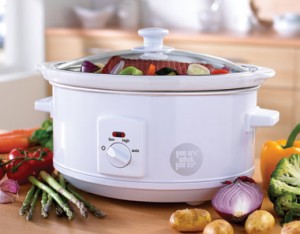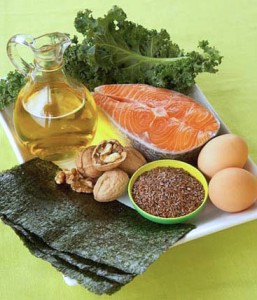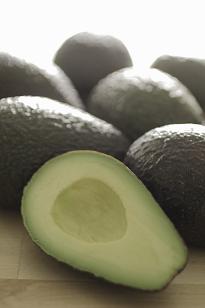 Let’s face it—you’re busy. Between work, running errands, hitting the gym, and stealing a little “you” time, there aren’t many hours in the day left to plan and prepare a gourmet meal.
Let’s face it—you’re busy. Between work, running errands, hitting the gym, and stealing a little “you” time, there aren’t many hours in the day left to plan and prepare a gourmet meal.
Luckily, these 3 one-pot meals are the ticket to saving time and eating delicious, healthy food. Simply put all the ingredients together, bake, and you’re done:
Rustic Ratatouille
Chickpeas are what gives this easy recipe a boost of serious nutrition and taste. These high-fiber legumes leave you feeling full and offer your body a low-fat dose of protein.
INGREDIENTS
- 4 small zucchini (about 1 lb), cut into 1-inch pieces
- 1 medium eggplant (about 1 lb), cut into 1-inch pieces
- 3 medium red bell peppers, cut into 1-inch pieces
- 3 medium onions, sliced
- 1 tablespoon chopped fresh thyme
- 1 tablespoon chopped fresh rosemary
- 1 teaspoon salt, divided
- ½ teaspoon freshly ground black pepper
- 1 tablespoon olive oil
- Vegetable oil cooking spray
- 2 cans (14 oz each) chickpeas, rinsed and drained
- 8 plum tomatoes (about 1 lb), seeded and cut into 1-inch pieces
- 1 tablespoon chopped garlic
- 1 tablespoon tomato paste
- 2 ½ teaspoons sherry wine vinegar or balsamic vinegar
- 3 tablespoons chopped fresh basil
PREPARATION
Heat oven to 450°. In a bowl, toss zucchini, eggplant, bell pepper and onion with thyme, rosemary, ¾ tsp salt, black pepper, 2 tbsp water, and oil. Coat a rimmed sheet pan with cooking spray. Spread veggies in pan in a single layer, and roast for 25 minutes, stirring once.
In same bowl, combine chickpeas, tomatoes, garlic, tomato paste and remaining ¼ tsp salt. Add to the pan with veggies in a single layer, and roast for about 10 to 12 minutes more. Toss veggies with vinegar, divide among 6 bowls, and sprinkle with basil. Serves 6.
Teriyaki Salmon
Omega-3 fatty acids found in the salmon are not only beneficial for your brain, but they also reduce inflammation, boost heart health, lower triglycerides, relieve rheumatoid arthritis, and even aid in the treatment of depression. Make this simple dish, and reap the benefits of better health!
INGREDIENTS
- 2 tablespoons low-sodium teriyaki sauce
- 1 tablespoon honey
- 1 tablespoon rice vinegar
- 4 teaspoons chopped garlic, divided
- 1 teaspoon grated ginger
- 1 teaspoon dark sesame oil
- 6 salmon fillets (about 1 ½ lb)
- 1 lbbrussels sprouts, halved if large
- 1 tablespoon canola oil, divided
- ½ teaspoon salt, divided
- ½ teaspoon freshly ground black pepper, divided
- Vegetable oil cooking spray
- ½ lb shiitake mushrooms, thickly sliced
PREPARATION
Position rack in middle of oven; heat oven to 450°. In a bowl, combine teriyaki sauce, honey, vinegar, 1 tsp garlic, ginger, and sesame oil. Place salmon in a shallow dish; sprinkle with 1 ½ tbsp teriyaki mixture, and marinate for 15 minutes.
In a second bowl, toss brussels sprouts with 1 ½ tsp garlic, ½ tbsp canola oil, ¼ tsp salt and ¼ tsp black pepper. Coat a rimmed sheet pan with cooking spray. Spread brussels sprouts in pan in a single layer; roast until light brown—about 5 minutes.
In the second bowl, toss mushrooms with remaining ½ tbsp canola oil, 1 ½ tsp garlic, ¼tsp salt and ¼ tsp black pepper. Move brussels sprouts to center of pan; top with salmon; place mushrooms in pan around edges; roast, stirring mushrooms occasionally, until salmon is just cooked through—about 8 to 10 minutes. Top salmon with remaining teriyaki mixture, and serve over brussels sprouts and mushrooms. Serves 6.
Scallops à la Provençal
Scallops are a great way to introduce a rich taste to your meals and save some money, too. Shellfish tend to cost less than a good cut of beef, and they are lower in fat to boot. So eat up, and enjoy!
INGREDIENTS
- 5 cups cherry tomatoes
- 2 ½ tablespoons chopped garlic, divided
- 5 teaspoons chopped fresh thyme, divided
- 5 teaspoons olive oil, divided
- ½ teaspoon salt, divided
- ½ teaspoon freshly ground black pepper, divided
- Vegetable oil cooking spray
- 2 cups fresh corn
- 1 lb sea scallops
- 2 teaspoons balsamic vinegar
- 3 tablespoons chopped fresh herbs such as parsley, basil, chives or a combination, divided
- 2 cups arugula
PREPARATION
Heat oven to 375°. In a bowl, combine tomatoes with 2 tbsp garlic, 3 tsp thyme, 3 tsp oil, ¼ tsp salt, and ¼ tsp black pepper. Coat a rimmed sheet pan with cooking spray; spread tomato mixture on pan in a single layer. Bake, stirring once or twice, until tomatoes are soft and slightly charred—about 20 to 25 minutes.
Stir corn into tomato mixture. In same bowl, toss scallops with remaining 2 tsp thyme, 2 tsp oil, ½ tbsp garlic, ¼ tsp salt, and ¼ tsp black pepper. Place scallops on top of tomato mixture, and bake until scallops are just cooked through—about 12 to 15 minutes. Transfer scallops to a plate, and cut in half. Stir vinegar and 2 tbsp herbs into tomato mixture. Divide arugula, tomato mixture and scallops among 4 bowls; sprinkle with remaining 1 tbsp herbs.Serves 4.
Do you know a great one-pot healthy recipe? Share your go-to dish in the comments below!







